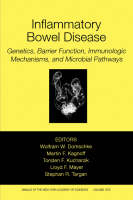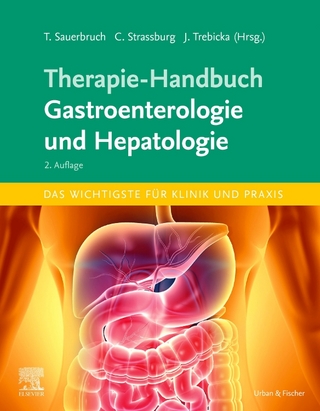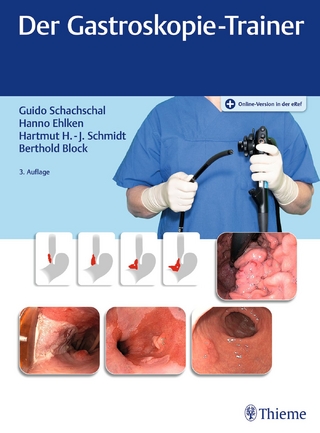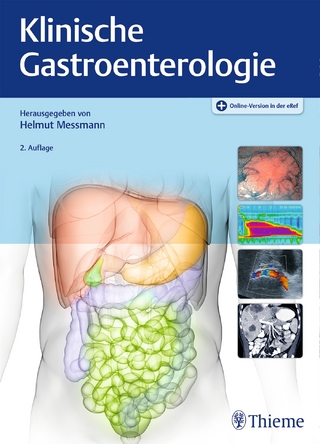
Inflammatory Bowel Disease
Wiley-Blackwell (Verlag)
978-1-57331-568-5 (ISBN)
Inflammatory bowel disease (IBD), which encompasses both Crohn's disease and ulcerative colitis, is a chronically relapsing intestinal disorder that is characterized by diarrhea and abdominal pain.
The incidence of IBD is increasing worldwide. Although some major advances have been made in recent years, the pathogenesis of the disease still remains obscure. As currently understood, a combination of genetic alterations and immunological disturbances causing an interaction of the enteric microflora with the underlying mucosa and a disrupted barrier function may be crucial for the development of disease.
Despite substantial new data that have been obtained over the last several years, it has become increasingly difficult to accommodate these into a unifying disease model. Identification of pro- and anti-inflammatory cytokines has introduced "biologic therapies," but treatment of IBD is still based mainly on broad-spectrum immunosuppressive drugs such as steroids and azathioprine. In this volume, the most relevant pathogenetic aspects are stressed: genetic alterations, disrupted epithelial barrier function, immunological disturbances, and the role of the enteric microflora.
NOTE: Annals volumes are available for sale as individual books or as a journal. For information on institutional journal subscriptions, please visit www.blackwellpublishing.com/nyas.
ACADEMY MEMBERS: Please contact the New York Academy of Sciences directly to place your order (www.nyas.org). Members of the New York Academy of Science receive full-text access to the Annals online and discounts on print volumes. Please visit http://www.nyas.org/MemberCenter/Join.aspx for more information about becoming a member.
Wolfram W. Domschke and Martin F Kagnoff are the authors of Inflammatory Bowel Disease: Genetics, Barrier Function, and Immunological Mechanisms, and Microbial Pathways, Volume 1072, published by Wiley.
Introduction: Current Limitations of IBD Treatment. Where Do We Go From Here?: S.R. Targan.
Part I: Genetics of Inflammatory Bowel Disease –NOD/CARD Proteins: Diagnostic and Therapeutic Consequences?:.
1. Microbial Signaling Through NOD Proteins: D. Philpott.
2. NOD2/CARD Mutations in Crohn’s Disease: J.P. Hugot.
3. Functional Relevance of NOD2 On Cellular Signalling in Crohn's Disease: G. Nunez.
4. Do Genetic Mutations Provide New Insights for Therapy?: J. Cho.
Part II: Immunologic Abnormalities in IBD – What Can We Learn From Animal Models?:.
5. Role of TGFβ in Mucosal Inflammation: W. Strober.
6. TNF/TNFR-Pathways in Chronic Inflammation: G. Kollias.
7. Lessons From Enteric Infections: L. Eckmann.
8. New Insights From Studies of Regulatory T Cell Populations: A. O'Garra.
9. the Commensal Microbial Flora: Relevance for Intestinal Inflammation: C.O. Elson.
Part III: Immunologic Disturbances in Human IBD – Defining and Manipulating the Key Pathways:.
10. Chemokines and Cell Trafficking Within the Inflamed Mucosa -- Inhibition of Chemokine Receptors or Ligands as a Potential Approach for Treatment?: I.R. Williams.
11. Life and Death – the Role of Apoptosis: T. Kucharzik.
12. Cytokines – Who Are the Key Plays and the Role for Cytokine Treatment: R.S. Blumberg.
13. Novel Signal Transduction Pathways – Relevance for Future Therapies?: M.F. Neurath.
14. NF-Kappa-B Signaling –the Pros and Cons of Altering NF-κB as a Therapeutic Approach: M. Karin.
15. Intracellular Targets: a Role for Inhibition of MAP-Kinases in Therapy?: S.J. Deventer.
16. Leucocyte Adhesion Molecules – Are They Relevant as Target for IBD Treatment?: D.B. Binion.
Part IV: Intestinal Epithelial Cells in IBD - An Active Barrier?:.
17. Tight Junction Function and the Modulation of Paracellular Permeability During IBD: a. Nusrat.
18. Epithelial Transport Under Inflammatory Conditions – Can It Be Regulated?: M.C. Berin.
19. Imbalance of Epithelial Electrolyte Homeostasis – Role in the Pathophysiology of IBD: U. Seidler.
20. Neutrophil Transepithelial Migration and Epithelial Barrier Function in IBD – Potential Targets for Inhibiting Neutrophil Trafficking: C.A. Parkos.
Part V: GALT – Relevant for Regulation of Inflammation?:.
21. Collaboration of Epithelial Cells With Organized Lymphoid Tissue: M.J. Kraehenbuhl.
22. Role of Lymphotoxins in the Development of PP and MLN – Relevance to Intestinal Inflammation and Treatment: T.W. Spahn.
23. Trafficking and Function of Mucosal Dendritic Cells: A. Iwasaki.
24. Intraepithelial T-Cells – Implication for Intestinal Inflammation: M. Kronenberg.
Part VI: Relevance of Microbial Factors – Additive Or Causative for IBD?:.
25. Microbial – Epithelial Cell Crosstalk During Inflammation: The Host Response: M. Kagnoff.
26. Role of Toll-Like Receptors in Orchestrating the Innate Immune Response – Potential Targets for Treatment?: D. Podolsky.
27. Host-Bacterial Interactions in the Gut: Signalling by Commensal Flora: J. Gordon.
28. Immunostimulatory DNA- Potential Therapeutics for Treatment of Enteric Inflammatory Disease?: E. Raz.
29. Probiotics – Their Role in Controlling Intestinal Inflammation?: J.F. Colombel.
30. Inflammatory Bowel Disease – Pandora's Box, Present and Future: J. Schölmerich.
Index of Contributors
| Erscheint lt. Verlag | 23.11.2006 |
|---|---|
| Reihe/Serie | Annals of the New York Academy of Sciences |
| Verlagsort | Hoboken |
| Sprache | englisch |
| Maße | 152 x 229 mm |
| Gewicht | 671 g |
| Themenwelt | Medizinische Fachgebiete ► Innere Medizin ► Gastroenterologie |
| ISBN-10 | 1-57331-568-0 / 1573315680 |
| ISBN-13 | 978-1-57331-568-5 / 9781573315685 |
| Zustand | Neuware |
| Haben Sie eine Frage zum Produkt? |
aus dem Bereich


